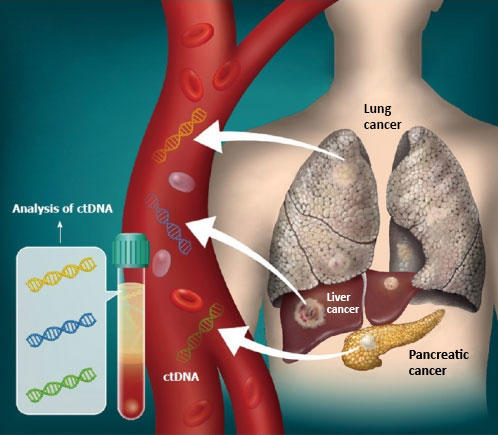A corn plant knows how to find water in soil with the very tips of its roots, but some varieties, including many used for breeding high-yielding corn in the U.S., appear to have lost a portion of that ability, according to a Stanford-led study. With climate change increasing droughts, the findings hold potential for developing more resilient varieties of corn.
The study, published in the journal Science , uncovers genetic mechanisms behind root "hydropatterning," or how plant roots branch toward water and avoid dry spaces in soil. In particular, the researchers discovered that ethylene, a plant hormone known to help bananas ripen, also influences how roots grow to seek water.
"Plants are sophisticated in the way that they 'see' where water is in soil, and the genes that are responsible for that play an important role in helping the plant create a root system that is optimized for efficient water uptake," said José Dinneny , the study's senior author and a professor of biology in Stanford's School of Humanities and Sciences .
Essentially, the plants use the gaseous ethylene produced by their roots to sense where the air spaces are in the soil, Dinneny said. Then, they regulate the branching of roots downstream of that hormone.
Water-seeking roots
While the Dinneny lab had previously revealed the fine sensitivity that corn roots have for detecting water, just how well a plant does this was found to heavily depend on the specific variety of corn.
For this study, the researchers developed a new, simplified way to study water sensitivity in roots, making it possible to analyze the responses of 250 corn varieties that reflect the genetic pool present in modern corn breeding. They found that corn varieties adapted to grow in tropical or subtropical areas like Mexico were very good at making new root branches toward water and avoiding dry areas. In contrast, the varieties adapted to temperate regions of North America frequently grew roots in many directions without distinguishing between dry and wet areas in the soil. This work was made possible through an international collaboration of several research groups contributing expertise in quantitative genetics, evolution, and root development.
The development of modern corn grown in the U.S., a major crop often grown on highly fertile agricultural lands, may have weakened the plants' water-seeking root response, the researchers said. They also noted that comparisons to field studies showed that stronger hydropatterning was linked to greater root depth.
"Interestingly, the plants that are better at sensing where the water is are also making deeper root systems," said lead author Johannes Scharwies, a postdoctoral scholar in Dinneny's lab. "One hypothesis could be that if the plant doesn't waste time growing root branches into places where it doesn't find any water and nutrients, then it has more energy to grow deeper down where water is more likely."
Targeting drought resilience
The researchers found through genetic analyses that two plant hormones, auxin and ethylene, play a role in how corn roots respond to water. While auxin was already known to help control this process, ethylene's involvement was a new discovery. In experiments with thale cress (Arabidopsis thaliana) – a model plant often used in research – the researchers found that the genetic signaling pathways of the two hormones complement each other: Auxin signaling promotes root branch development toward water, while ethylene suppresses branching when the root is exposed to air.
Further research is needed to better understand the interaction of these genetic pathways before corn varieties can be developed with more drought-resilient root systems, but the findings underscore the importance of studying these localized responses at root tips, Scharwies said.
"Each root tip acts like a sensor in the soil. They forage for water and nutrients and control in which direction new root branches should be grown," he said. "We need to spend more time looking at these very local root responses to understand what the whole plant does, and then we can use that to develop plants that are more resilient against drought."
Additional co-authors on the study include life sciences technician Taylor Clarke, lab manager Andrea Dinneny, and postdoctoral scholar Héctor Torres-Martínez from Stanford as well as researchers from the Howard Hughes Medical Institute, Iowa State University, Norwegian University of Life Sciences, University of Oslo in Norway, University of Nottingham in the U.K., and the University of North Carolina, Chapel Hill.
This research received support from the Howard Hughes Medical Institute; U.S. Department of Energy; National Science Foundation; UKRI Frontiers Research, Biotechnology and Biological Sciences Research Council; European Research Council, Horizon Europe; and the Evotree project.






